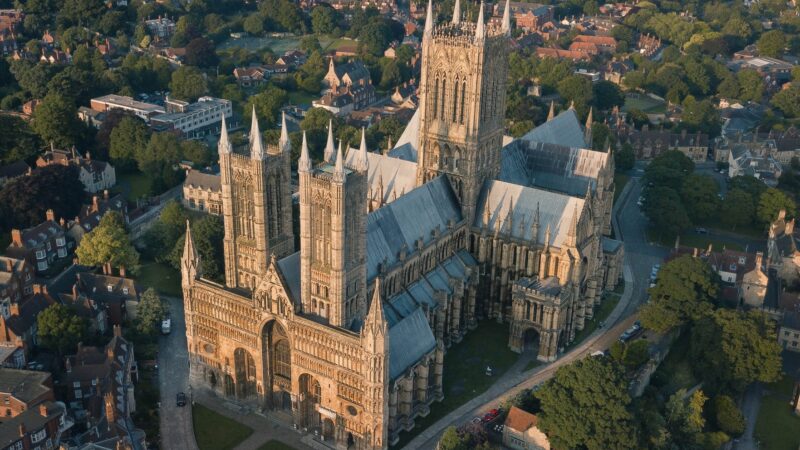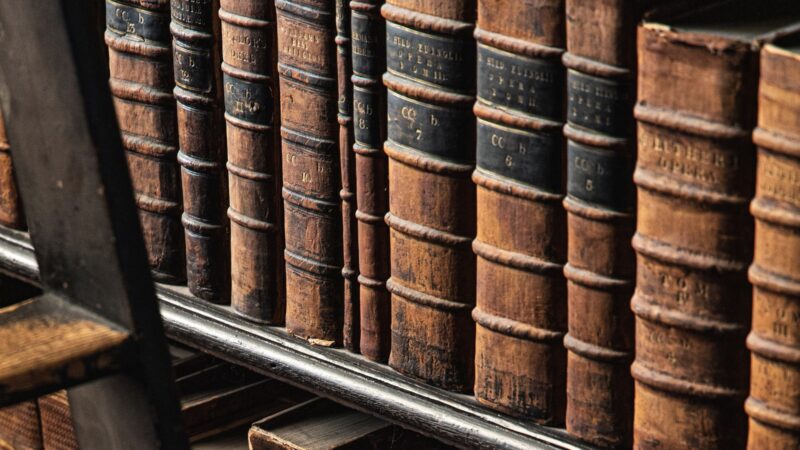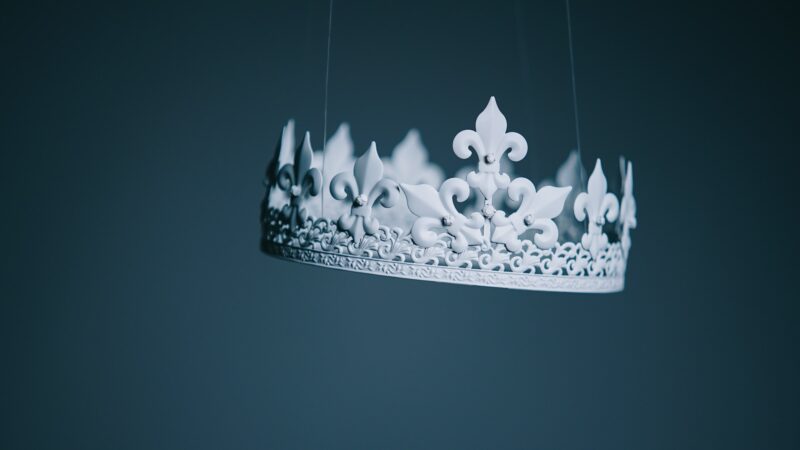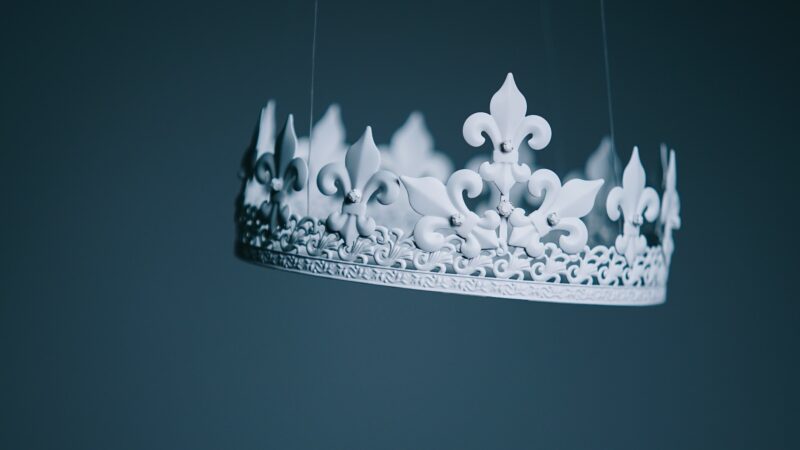Consorts (Part 3)
Eleanor of Castile
- Life: 1241-28th November 1290
- Reigned: 20th November 1272-28th November 1290
- Spouse: Edward I (m. 1254)
- Children: Sixteen, including Edward II
- Parents: Ferdinand III of Castile and Joan, Countess of Ponthieu
- Origin: Spain
Early Life: Eleanor of Castile was born sometime in 1241 in Burgos, Castile (later Spain). Her parents were Ferdinand III of Castile and Joan, Countess of Ponthieu. Ferdinand was one of Castile’s most successful rulers, as he greatly expanded its territory and joined it with León. Joan was Ferdinand’s second wife- Elisabeth of Swabia had died in 1235. Their eldest son, Alfonso, would succeed to the throne after his father’s death.
Eleanor was her mother’s successor as Countess of Ponthieu. She had five brothers, seven half-brothers and three half-sisters, though most did not live past early childhood. Eleanor was extremely well-educated, even for the time, and enjoyed the arts and literature. This extended to Alfonso and the Castile court itself.
Marriage and Children: The only living daughter of Ferdinand III and half-sister of Alfonso X, Eleanor was a desirable candidate in the marriage market. After several betrothals were played with, Eleanor was ultimately engaged to Prince Edward, heir to the throne of England. They wed on the 1st November 1254. Eleanor was about thirteen and Edward only a couple of years older.
Edward and Eleanor had a famously loving marriage. They were close from the moment they married, no doubt helped by the fact that they were practically the same age. Edward never strayed from his wife or had any illegitimate children, an extreme rarity for the time. He loved the fact that she joined him on the Crusades. Eleanor’s death would devastate him and it was only by need that he chose to remarry. They were rarely apart.
The pair had sixteen children- eleven daughters and five sons. Only seven of their children lived past infancy- indeed, the future Edward II was their youngest son and child. Eleanor adhered to the parenting styles of the time by sending her children away to be educated and barely seeing them. She did care for their education and arranged her daughters’ marriages.
Pre-Reign and Queenship: Eleanor and Edward initially lived on the continent, but moved back to England in 1255. During the Second Barons’ War, Eleanor joined her husband as he fought in Wales. She once again was at his side when he traveled to fight during the Crusades. At this point, Eleanor had given birth to six of her children. Three more would be born during the Crusades, though only one would live to adulthood.
In 1272, they received word that Edward’s father had died. They nevertheless stayed on the continent until 1274, whereupon they returned to England. The pair were crowned together on the 19th August of that year.
Eleanor was uninvolved in politics due to her husband’s views on the matter, but was seemingly alright to it. She instead focused on culture. Her influence included arts, literature, education, decoration and clothing. Eleanor’s superior education helped her in that respect. In that way, she fulfilled the traditional role of Queen- she was not political and focused on the feminine aspects of a reign.
Whilst she enjoyed a close relationship with her husband, Eleanor was generally very unpopular with the public. Her business dealings, which made her incredibly wealthy in both land and money, were seen as unbecoming for a queen. The large foreign retinue of cousins that came with Eleanor were also disliked, though Eleanor was smart enough not to let the men marry English noblewomen. She also supported her husband’s crusade against the Jewish people.
By the mid to late 1280s, Eleanor was frequently ill. In 1290, it was clear that she was dying. Eleanor used her remaining time to arrange the marriages of her children. In November of that year she was no longer able to travel and was thus given quarters in Nottinghamshire.
On the 28th November 1290, Eleanor Castile died at the age of 48-49. Her husband was by her side. Eleanor is buried in three places- her viscera (internal organs) in Lincoln Cathedral, her heart at Blackfriars Monastery and the rest of her body in Westminster Abbey. Edward would later be buried beside her.
Personality: Eleanor was an intellectual with a passion for the arts and culture, something that is part of her legacy. She was also extremely brave and strong, as evidenced by her joining her husband on the Crusades. Several of her children were born abroad as opposed to the safety of England. Unfortunately, Eleanor had her flaws. Her ruthlessness towards the Jews may not have been the same as her husband’s, but she still seized lands from them. Her general business dealings made her unpopular.
Legacy: Eleanor’s most famous legacy is that of the Eleanor crosses. Her broken-hearted husband built twelve large, intricate crosses to mark the stops taken as her body was taken back to London. Only two remain. Eleanor’s cultural influence was also strong. She is also often remembered for the loving relationship she shared with her husband, a sharp contrast with that of other medieval marriages.
Margaret of France
- Life: c.1279-14th February 1318
- Reigned: 8th September 1299-7th July 1307
- Spouse: Edward I (m.1299)
- Children: Three
- Parents: Philip III of France and Maria of Brabant
- Origin: France
Early Life: Margaret of France was born around 1279 in Paris. Her parents were Philip III of France and Maria of Brabant. She was the youngest child of both parents, with Philip having been married to Isabella of Aragon until her 1271 death. Margaret has a brother, a sister, and five half-brothers, though most did not live past childhood.
Very little is known about her early life, but she was likely well-educated as a princess of France.
Marriage and Children: Margaret’s older sister Blance was initially engaged to Edward’s son, the future Edward II. Upon hearing of Blanche’s apparent beauty, Edward broke off the relationship in hopes of marrying his son’s betrothed. It turned out that Blanche had already been married off. Her half-brother Philip IV had been king since Margaret was six and offered her as Edward’s bride. An angry Edward refused and declared war on France. Eventually, an agreement was made. Margaret’s half-niece Isabella would later marry Edward II as part of the agreement.
Despite Edward’s devoted love to his late wife Eleanor, the fact he only had one living son made it essential that he remarry. In the end, Edward and Margaret would enjoy a very happy marriage. Their age gap was at least forty years, but they lived harmoniously. Margaret’s decision to join her husband on the front was reminiscent of Eleanor and thus pleased him greatly. Their relationship was so great that Margaret would refuse to remarry upon his death.
Margaret had two sons within two years of marriage, fulfilling Edward’s hopes of further sons. She would later have a daughter that she named Eleanor after her predecessor.
Queenship: Like Eleanor, Margaret was not involved in politics but was surely a close confidant of her husband. She also bravely joined her husband at the front, something that endeared her greatly to him.
Margaret fulfilled her role as Queen in more ways than just providing sons. A medieval Queen was expected to be a mediator and a calm, feminine influence on her husband. The kind Margaret would intercede on behalf of those who had displeased the king. This most notably extended to her stepson Edward, who often quarreled with his father. Edward was only two years Margaret’s junior and the pair got on extremely well.
After nearly eight years of marriage, Edward I died on the 7th July 1307 aged 68.
Post-Queenship: Margaret remained in England following Edward’s death. Despite her youth (she was 26 when she was widowed), Margaret refused to remarry, saying that ‘when Edward died, all men died for me.’
She remained on good terms with her half-niece Isabella upon the girl’s marriage to Edward II in 1308. Unfortunately, Edward’s association with Piers Gaveston soured their previously excellent relationship. Margaret’s rightful lands were confiscated but she later got them back.
Personality: Margaret was a singularly kind, warm woman who was an excellent queen. She fulfilled her duties through her interceding on behalf of others and mediating between her husband and stepson. Margaret’s kindness went beyond what was expected of the time and thus won her affection. She showed bravery by joining her husband on the front. Despite their large age gap, Margaret was a devoted spouse and remained loyal after her husband’s death. She was kind to her successor Isabella.
Legacy: Margaret is not as remembered as her predecessor Eleanor, probably helped by the fact that she was not the mother of a king. Her granddaughter Joan, however, would marry Edward II’s son and become mother of Richard II, the boy king. Her loyalty to Edward is something some will remember.
Isabella of France
- Life: c.1295-22nd August 1358
- Reigned: 25th February 1308-25th January 1327
- Spouse: Edward II (m.1308)
- Children: Four, including Edward III
- Parents: Philip IV of France and Joan I of Navarre
- Origin: France
Early Life: Isabella of France was born around 1295 in Paris. Her parents were Philip IV of France and Joan I of Navarre. Philip’s half-sister Margaret was Isabella’s predecessor as Queen, and they were both engaged to their respective husbands through the same agreement. Philip himself was a handsome man known to be a very strong and hard king. Joan was a beloved Queen who enjoyed a close relationship with her husband. She died when Isabella was about ten.
As befitting a princess of France, Isabella received a thorough education, probably similar to the one her aunt Margaret received.
Marriage and Children: The agreement that had Edward I and Margaret of France married saw Isabella engaged to Edward’s son. The king attempted to stop the marriage several times, but the issue became moot when he died.
Edward II married Isabella on the 25th January 1308 in a very elaborate ceremony. Unfortunately, it was not a good marriage. The roughly twelve year-old Isabella was immediately sidelined at her own wedding reception when Edward sat with his favourite Piers Gaveston. He went so far as to gift all of Isabella’s jewellery and presents to Gaveston, angering her and the nobles. Their poor relationship will be explored further in the Queenship section, as the repercussions were great.
As Isabella was only around twelve at the wedding, it was a while before the wedding was probably consumated. The pair’s first child, the future Edward III, was born nearly five years after the wedding. Isabella and Edward would have two sons and two daughters.
She was the typical medieval mother in her parenting style. Her machinations alienated her son Edward to the point of him imprisoning her upon reaching his majority. Isabella was close to her daughter Joan in later life.
Queenship: Isabella was immediately ignored by her new husband. This was not helped by her youth and the fact that she was too young to consummate the marriage, but Edward II was not a good husband. Her jewels and gifts had been given to Piers Gaveston. She was denied money and maintenance, forcing her to complain to her father.
Eventually, Isabella found herself allying with Gaveston. Despite her relative youth, Isabella was an intelligent young woman who was attempting to forge her own political path. Unfortunately for her, Gaveston had earned the ire of the powerful nobles and would be executed in 1308. Isabella was pregnant at the time.
Things would only get worse, despite Isabella successfully giving birth to a son. Edward became close to the Despensers, a father and son duo who would soon become his closest allies. Hugh Despenser the Younger was a great favourite of Edward and it’s believed that they had a sexual relationship. Isabella found herself still cast out of Edward’s inner circle. Despite her problems with a lot of the nobility, Isabella supported their efforts to get rid of the Despensers.
With Despenser at his side, Edward became a despot over the next few years. Isabella set up her own household far away but would be punished by having her children taken away and her lands confiscated.
Luckily, Isabella was able to get herself sent to France as a peace envoy. Whilst there, she rallied anti-Edward forces with the help of Roger Mortimer, a leading nobleman. The forces arrived in England and quickly took over. Edward was captured two months later and forced to abdicate. Both Despensers were brutally executed.
Isabella had her son Edward installed and crowned in early 1327. Meanwhile, the former Edward II was shuttled around before being placed in Berkeley Castle. He died on the 21st September of that year. The circumstances of his death are murky. Historians remain divided as to whether he was murdered or died of natural causes, though murder is more likely.
Post-Queenship: With Edward III barely a teenager, he required a regent. Isabella, along with Mortimer, fulfilled that role. She ensured her son listened to her and the boy had limited power. Mortimer was a careless man and was stupid enough to treat Edward badly. Eventually, Edward had enough, especially after his father’s death. The trigger was Mortimer ordering the execution of Edward’s uncle, the Earl of Kent.
Edward took his mother and Mortimer by surprise when he captured them in late 1330. Whilst he placed Isabella in a luxurious house arrest, he had Mortimer executed without trial.
Isabella spent years living very comfortably and was often visited by family and friends. Despite her cold reputation, she was a loving mother to her daughter Joan and doting grandmother.
The ‘She-Wolf’ of France died on the 22nd August 1358 around the age of 62. She is buried at Grey Friars’ Church.
Personality: Isabella was a complicated woman. She showed great intelligence and political acumen, but was also very ruthless and sharp. Whilst many queens were forced to live through their husband’s affairs, none would be quite humiliated as Isabella was. She was called a ‘She-Wolf,’ but we must remember she was a humiliated child bride. Such actions in men would not be treated so poorly. Whilst Isabella was controlling of her son, she did prove to be a loving grandmother.
Legacy: Isabella is remembered as a cold, calculating woman as opposed to the pure and virtuous ladies of her era. She succeeded in giving birth to heirs but did not follow the tradition of ‘feminine’ queenship. The truth is more complicated- Isabella was ruthless and cold, but no more than other historical figures.
Philippa of Hainault
- Life: 24th June 1310/1315-15th August 1369
- Reigned: 24th January 1328-15th August 1369
- Spouse: Edward III (m.1328)
- Children: Thirteen, including Edward the Black Prince
- Parents: William I, Count of Hainaut and Joan of Valois
- Origin: France
Early Life: Philippa of Hainault was born on the 24th June 1310 or 1315 in Valenciennes, modern day France. Her parents were William I, Count of Hainaut and Joan of Valois. She was the third of their eight children. Whilst Philippa did not have the title of princess, Joan of Valois was the granddaughter of a French king and sister of the other.
She was likely well-educated.
Marriage and Children: A betrothal between the future Edward III and Philippa was tentatively discussed as early as 1322. Four years later, Edward’s mother Isabella had them officially engaged in return for William’s help in invading England.
The marriage was a success even before the wedding, as it is said that Philippa cried when Edward left to return home. Their proxy wedding occurred in October 1327 before their official marriage three months later.
Edward and Philippa had a strong, loving relationship that lasted throughout their marriage. This did not stop Edward from straying in his wife’s later years, as he had a young mistress named Alice Perrers, with whom he had three children. It is argued that this only occurred when Philippa’s health was poor and that it was kept from her. This was oddly progressive for the time, as kings didn’t usually hide mistresses. Whilst he did have the affair with one other woman, Edward’s true love was clearly Philippa.
The pair managed to have thirteen children- eight sons and five daughters, eight of whom would live to adulthood. Interestingly, most of their children would marry rich English nobles as opposed to foreign royals. This was most unusual for their eldest son and heir Edward, who married his widowed cousin Joan. Perhaps the happiness between Edward and Philippa allowed them to have their own children be married for love.
Queenship: Philippa may have been Queen in name, but her mother-in-law Isabella was Queen in every other way. Isabella did not like relinquishing her title and thus prevented Philippa’s coronation. It was not until Philippa was pregnant that she was crowned. Luckily for Philippa, she bore a healthy son and unrelated events saw Mortimer executed and Isabella imprisoned.
Throughout her time as Queen, Philippa proved to be enormously popular and beloved. She was not necessarily political in the way Isabella was, but she used her influence when necessary. Edward trusted her to act as regent when he was away and she proved herself more than capable.
It was Philippa’s kindness and charity that made her loved. The most famous of these cases was that of the Burghers of Calais. Angered by the holdout of the city, Edward swore he’d spare the citizens if six of the leaders (burghers) made themselves known and surrendered to him. Before he could presumably have them executed, a barefoot and pregnant Philippa fell to her knees before him. She begged him to spare them, saying that their unborn child would be punished if they did not. Edward was supposedly so moved by this that he agreed to let them live.
Her charity extended to those at home. Philippa also bravely encouraged troops fighting the Scottish invaders, something sorely needed as Edward was out of the country.
In her later years, Philippa fell ill. Those years saw Edward turn to Alice Perrers and father three children with her. Philippa finally passed on the 15th August 1369, somewhere in her mid-fifties. Edward was with her at her deathbed. She asked Edward to ensure that all of her debts and obligations were fairly paid.
Edward spent £3K on her tomb. Her death also saw a massive decline in his popularity. He was vilified for cheating on his loving wife with a younger woman- something extraordinary in a time where it was expected that kings would stray. Alice Perrers would become a huge villain in England. Perrers was accused of taking advantage of an old, grieving king by accepting extravagant gifts. Her interference in politics was not welcomed.
Upon his death, Edward was buried with his beloved Philippa.
Personality: Philippa is one of the most revered consorts in English history. Her kindness, warmth and generous nature made her beloved throughout her country. She was a very successful Queen- she completed the role of feminine mediator and provided her husband with many children. Even without that, her good heart kept her through. The fact that Edward was castigated for taking a mistress shows how loved she was.
Legacy: Philippa is not often remembered. She did not leave a lasting legacy through arts or culture, despite leaving a mark on the textile industry. Her eldest son did not become king, but her grandson would be. Philippa’s sons Edmund and John of Gaunt would become a direct monarchical ancestor.
Anne of Bohemia
- Life: 11th May 1366-7th June 1394
- Reigned: 20th June 1382-7th June 1394
- Spouse: Richard II (m.1382)
- Children: None
- Parents: Richard IV, Holy Roman Emperor and Elizabeth of Pomerania
- Origin: Czech Republic/Czechia
Early Life: Anne of Bohemian was born on the 11th May 1366 in Prague, modern day Czechia. Her parents were Richard IV, Holy Roman Empire and Elizabeth of Pomerania. Elizabeth was Richard’s fourth and final wife. Anne had three brothers, one sister, three half-brothers and three half-sisters. Richard was the most powerful king of the age and was also extremely popular.
She was likely well-educated.
Marriage and Children: The marriage between Anne and Richard II was an odd one. Despite Anne being the daughter of an extremely powerful monarch, she did not have a large dowry or other assets. The main reason was due to a problem with the Church and two rival popes. Richard and the Holy Roman Emperor both opposed France’s choice.
Richard and Anne were both fifteen when they married on the 20th January 1382. Despite Anne’s unpopularity and lack of wealth (Richard having to pay Anne’s brother for marriage), the two became devoted to one another. Richard never strayed and always defended Anne.
No children were born of the union. Anne was blamed by society, as women were at the time, but Richard never cast doubt towards her.
Queenship: Anne was known as ‘Good Queen Anne,’ which shows that she overcame early unpopularity. She would often intercede on behalf of others, as Philippa of Hainault had. This constant kindness made her beloved by the English people, and eventually the court. It was her sweetness that won the nobles over.
After a happy twelve years of marriage, Anne died aged 28 on the 7th June 1394. Edward was bereft. He ordered the palace that she died in to be torn down. Edward also refused to enter any building besides a church where he’d been with Anne. After his own 1400 death, Edward was buried with a tomb he’d already prepared beside Anne’s.
Personality: Anne was reportedly a sweet and kind woman. She cared greatly for her subjects and was merciful to a fault. It was her good nature that pushed away early criticisms directed towards her.
Legacy: Anne is not often remembered. She, and indeed Richard himself, has no children together, so she did not see any direct descendants claim the throne. Anne did bring new fashions over, such as new shoes.




